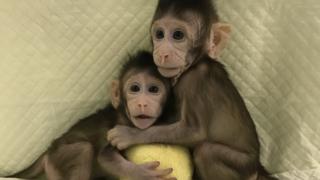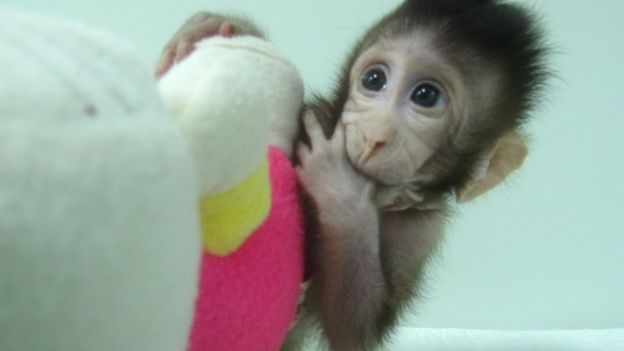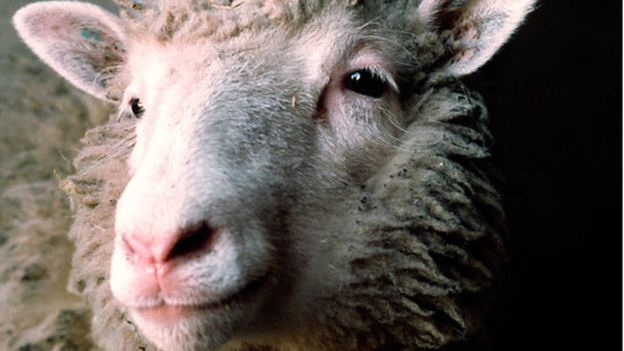 QIANG SUN
QIANG SUN
Two monkeys have been cloned using the technique that produced Dolly the Sheep.
Identical long-tailed macaques Zhong Zhong and Hua Hua were born several weeks ago at a laboratory in China.
Scientists say populations of monkeys that are genetically identical will be useful for research into human diseases.
But critics say the work raises ethical concerns by bringing the world closer to human cloning.
"There are a lot of questions about primate biology that can be studied by having this additional model," he said.
 CHINESE ACADEMY OF SCIENCES
CHINESE ACADEMY OF SCIENCES
Zhong Zhong was born eight weeks ago and is named after the word for Chinese nation or people. Hua Hua was born six weeks ago.
The researchers say the monkeys are being bottle fed and are currently growing normally. They expect more macaque clones to be born over the coming months.
'Not a stepping stone'
Prof Robin Lovell-Badge of The Francis Crick Institute, London, said the technique used to clone Zhong Zhong and Hua Hua remains "a very inefficient and hazardous procedure".
"The work in this paper is not a stepping-stone to establishing methods for obtaining live born human clones," he said.
Prof Darren Griffin of the University of Kent said the approach may be useful in understanding human diseases, but raised ethical concerns.
"Careful consideration now needs to be given to the ethical framework under which such experiments can, and should, operate," he said.
Dolly made history 20 years ago after being cloned at the Roslin Institute in Edinburgh. It was the first time scientists had been able to clone a mammal from an adult cell, taken from the udder.

Since then many other mammals have been cloned using the same somatic cell nuclear transfer technique (SCNT), including cattle, pigs, dogs, cats, mice and rats. This involves transferring DNA from the nucleus of a cell to a donated egg cell that is then prompted to develop into an embryo.
Zhong Zhong and Hua Hua are the first non-human primates cloned through this technique.
In 1999, a rhesus monkey embryo was split in two in order to create two identical twins. One of the baby monkeys born through that technique - called Tetra - has the title of the world's first cloned monkey, but it did not involve the complex process of DNA transfer.
'Much failure'
In the study, published in the journal, Cell, scientists used DNA from foetal connective tissue cells.
VISIT WEBSITE
No comments:
Post a Comment